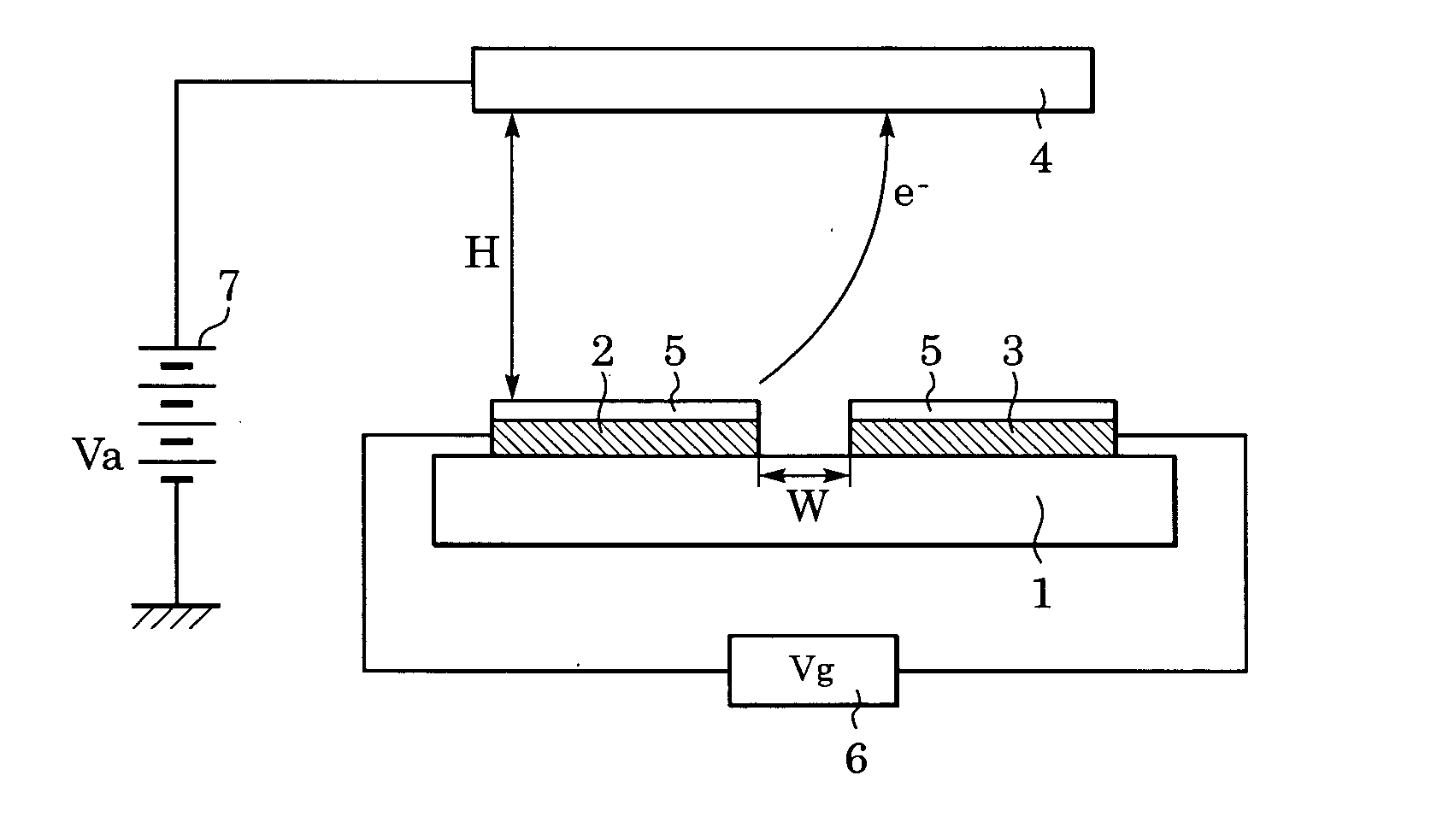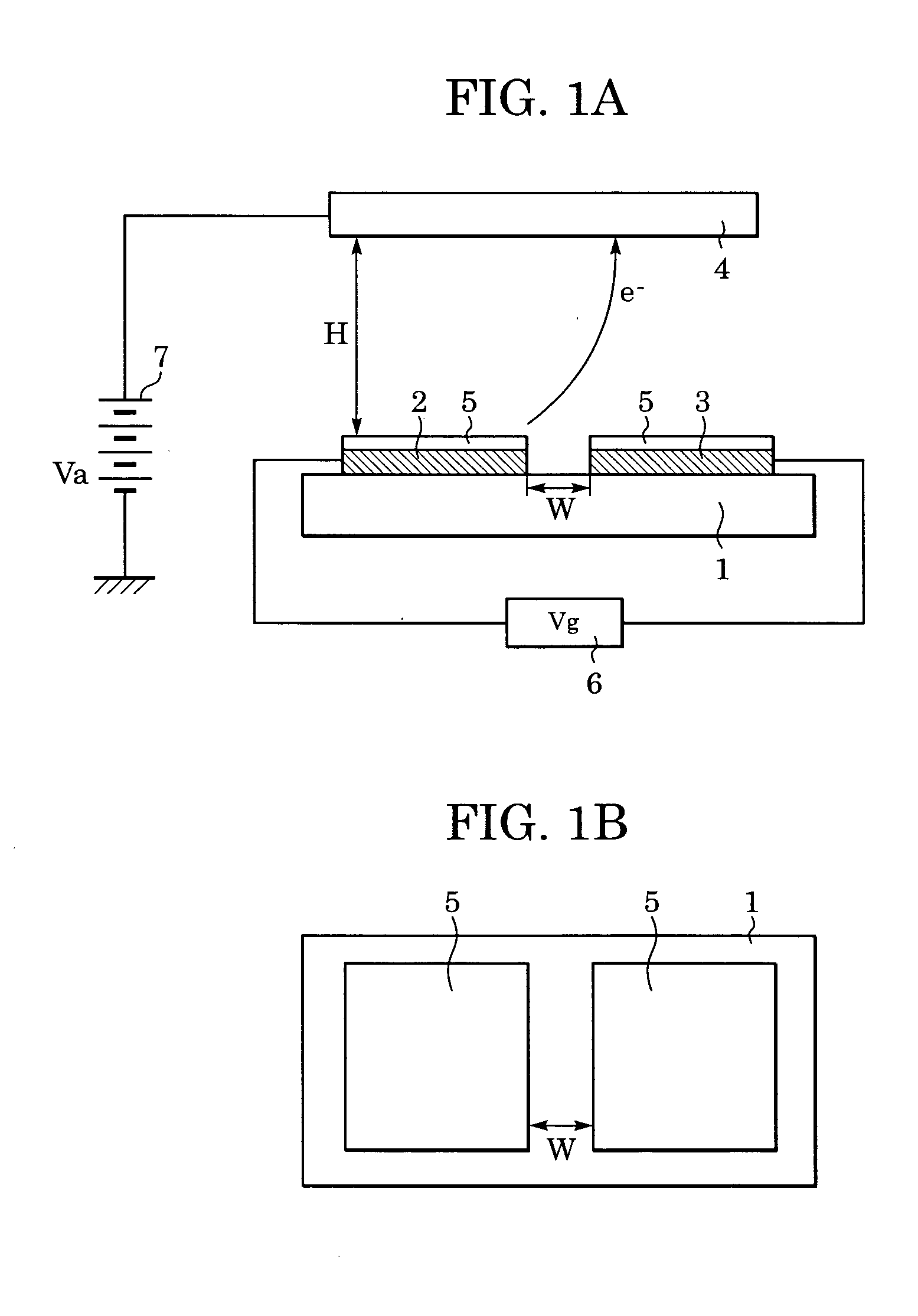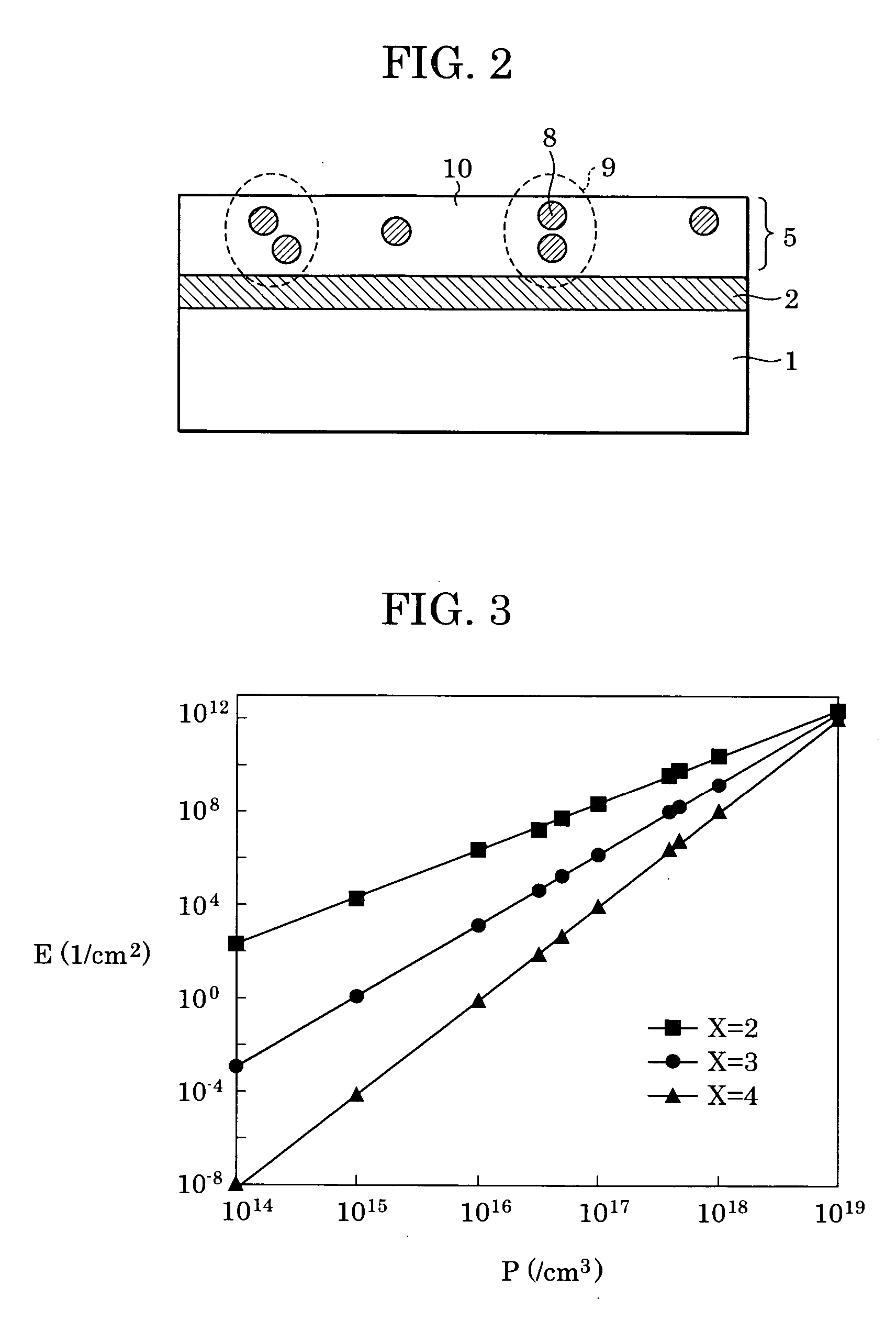Method of producing an electron emission device, method of producing an electron source, method of producing an image display device, and method of driving an electron emission device
- Summary
- Abstract
- Description
- Claims
- Application Information
AI Technical Summary
Benefits of technology
Problems solved by technology
Method used
Image
Examples
example 1
[0226] Specific examples based on the production method shown in FIGS. 8 and 9 are described.
[0227] An electron emission device including a carbon layer 5 with a dipole layer 11 shown in FIG. 6 was produced.
Step 1
[0228] First, a substrate 1 of quartz glass was prepared. After the substrate 1 was cleaned well, a conductive film 31 to be further formed into a cathode electrode 2 and the gate electrode 3 was formed by sputtering TiN on the substrate 1 to a thickness of 100 nm (FIG. 8A).
Step 2
[0229] A carbon layer 5 with a thickness of 4 nm was then formed by means of sputtering using graphite as a target in an ambient of argon. The resistivity of the obtained carbon layer 5 was 1×1011 Ω·cm (FIG. 8B).
Step 3
[0230] A resist mask 33 with a thickness of 1 μm was produced by means of a photolithographic process such that W became 1 μm (FIG. 8C).
Step 4
[0231] Subsequently, the carbon layer and the TiN electrode were successively dry-etched. To completely etch the TiN electrode, ov...
example 2
[0248] In Example 2, the carbon film shown in FIG. 2 was used.
Step 1
[0249] Step 1 was performed in a similar manner to step 1 of Example 1.
Step 2
[0250] Subsequently, to form the carbon layer 5, a DLC film with a thickness of 30 nm was deposited using an HFCVD (hot-filament chemical vapor deposition) method. The resistivity of the obtained DLC film was as high as 1×1012 Ω·cm. The growth conditions employed are as follows: [0251] Gas: CH4 [0252] Substrate bias: −50 V [0253] Gas pressure: 267 mPa [0254] Substrate temperature: Room temperature [0255] Filament: Tungsten [0256] Filament temperature: 2100° C.
Subsequently, the carbon layer 5 was doped with cobalt by implanting cobalt into the carbon layer 5 with energy of 25 keV to a dose of 3×1016 cm−2.
Steps 3 to 5
[0257] Steps 3 to 5 were performed in a similar manner as in Example 1, except that dry etching conditions were adjusted depending on the film thickness of the carbon film.
[0258] Subsequently, using a lamp, heat treat...
example 3
[0272] An electron emission device having a structure shown in FIGS. 15A and 15B was produced.
Step 1
[0273] First, a substrate 1 of quartz glass was prepared. After the substrate 1 was cleaned well, a film of Ta with a thickness of 500 nm was deposited by means of sputtering to form a cathode electrode 2.
Step 2
[0274] Thereafter, an insulating film 61 was formed by depositing a SiO2 film with a thickness (h) of 1 μm and then a gate electrode 3 was formed by depositing a Ta film with a thickness of 100 nm.
Step 3
[0275] Subsequently, a mask pattern was formed using a photolithography technique. More specifically, a positive photoresist (AZ1500 available from Clariant Corporation) was spin-coated and then exposed to a photomask pattern. Development was then performed thereby forming the mask pattern.
Step 4
[0276] By using the mask pattern as an etching mask, the gate electrode 3 of Ta was dry-etched using CF4 gas and then the SiO2 film 17 was etched using buffered hydrofluoric ...
PUM
 Login to View More
Login to View More Abstract
Description
Claims
Application Information
 Login to View More
Login to View More - R&D
- Intellectual Property
- Life Sciences
- Materials
- Tech Scout
- Unparalleled Data Quality
- Higher Quality Content
- 60% Fewer Hallucinations
Browse by: Latest US Patents, China's latest patents, Technical Efficacy Thesaurus, Application Domain, Technology Topic, Popular Technical Reports.
© 2025 PatSnap. All rights reserved.Legal|Privacy policy|Modern Slavery Act Transparency Statement|Sitemap|About US| Contact US: help@patsnap.com



